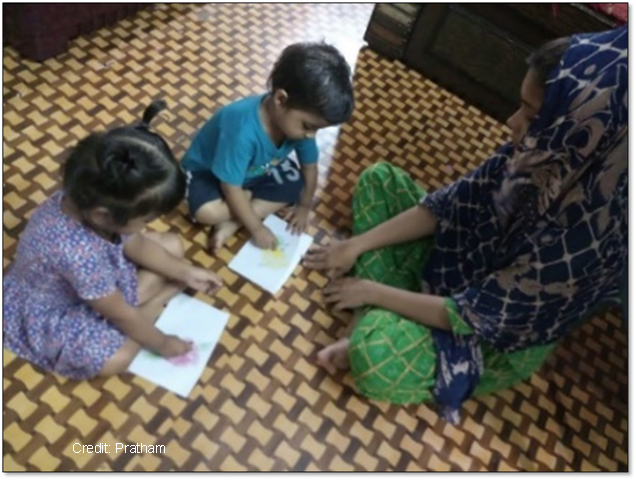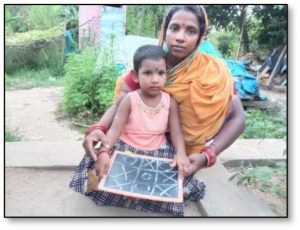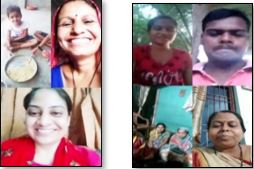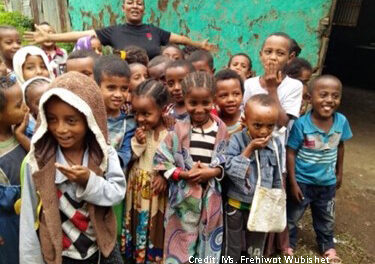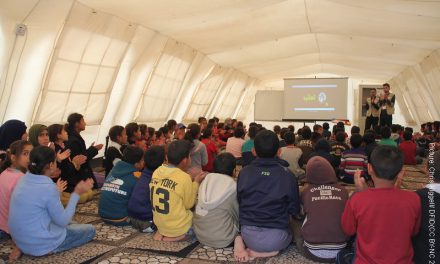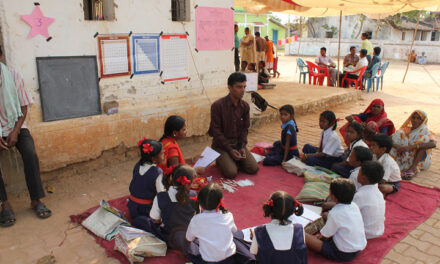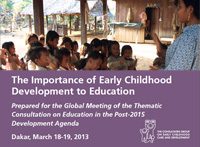This blog was written by Varsha Hari Prasad, Senior Associate at the Measurement, Monitoring, and Evaluation unit at Pratham Education Foundation, India.
Pratham’s early childhood education intervention focuses on the holistic development of children aged 3 to 6 years, through the use of local resources, age-appropriate materials, and the involvement of parents and caregivers. Prior to the COVID-19 pandemic, our model for early years involved a direct play-based intervention with children in government pre-school centres, primarily Anganwadis, and engaging with mothers through community-based groups and events. With the closure of Anganwadis post March-2020, it was critical to empower mothers to play an active role in their children’s learning, since mothers strongly influence children’s development during their early years. Thus, during the COVID-19 pandemic, Pratham transitioned to a home and community-centric remote learning model with mothers at the centre of young children’s learning and development.
On a daily basis, Pratham team members sent mothers simple game and play based activities to conduct with their children, through SMS text messages or WhatsApp videos/ audio clips. They also regularly called mothers to provide support, clarify doubts, listen to experiences, and take feedback. Through this remote learning model, Pratham reached approximately 90,000 children from ages 3 to 6 across 14 states in India.
In order to understand the situation of our young children during this period, we conducted in-person assessment activities with over 4,500 children in January 2021, when movement in the community was possible. The activity-based assessment was designed to understand children’s learning outcomes in the domains of social-emotional development, language development, and cognitive and pre-math development. While the assessment included a number of different activities, further analysis revealed significant correlations between the characteristics of mothers and children’s learning improvements in letter recognition and number recognition. Some of our key findings include:
- Higher mother-child engagement with remote activities was positively correlated with learning improvements: We quantified the engagement with activities sent via phones through a proxy indicator – this was the proportion of delivered activities that were completed during a reference period of 7 days (based on what mothers reported). We observed that when more than 50% of the activities were completed, children were more likely to have learning improvements. This showed us that sharing appropriate activity-based content with mothers and sustaining high engagement had a positive relationship with learning outcomes. This engagement was driven by consistent feedback calls and the strong relationships that Pratham team members developed with mothers in the community.
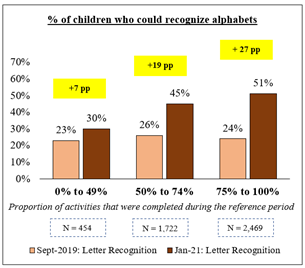 |
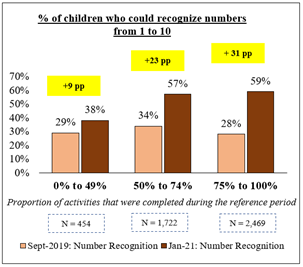 |
- The mother’s access to any type of phone, be it a low-tech regular keypad phone or a smartphone, was positively correlated with learning improvements: The mother’s phone ownership can be seen as a proxy for household socio-economic conditions. In our sample, 85% of mothers owned phones, with 48% owning regular keypad phones (with no internet connection), and 37% owning smartphones. However, 15% did not own phones at all, and these mothers were likely to be from the poorest households. For young mothers, having access to a smartphone may also reflect her own position in the family. Nonetheless, our findings indicated that even a low-tech resource like a regular keypad phone could make a significant difference in children’s learning improvements over time. It can be argued that video clips sent via smartphones are better learning resources than text messages sent to a regular keypad phone. However, our findings suggest that both types of phones enabled mothers to further their children’s learning outcomes.
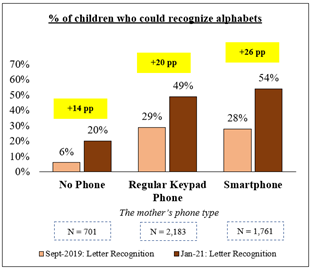 |
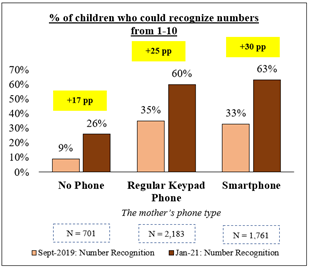 |
The COVID-19 pandemic has highlighted the role that mothers can play in actively furthering their children’s foundational learning. Our study showed that even in difficult conditions, remaining connected continuously to learning opportunities through simple digital content and access to even low-tech resources had a positive relationship with children’s learning outcomes.
Learning from the experiences and evidence generated, Pratham modified and adapted mother engagement efforts in the early childhood space by forming groups of mothers in the neighborhood. These groups of 4 to 6 mothers met once a week to discuss activities and share experiences. Groups usually had leaders known as Smart Mothers, who played an important role in facilitating regular interactions between all members, and also had access to smartphones. The group structure and culture ensured that mothers who did not have access to phones could still learn about the activities from other mothers, and members also provided the guidance, motivation, and engagement to continue activities with children. Between October 2020 and March 2021, Pratham activated approximately 15,600 mothers’ groups, covering about 72,600 mothers across 14 states in India.
Thinking ahead, we at Pratham strive to evolve effective interventions to empower mothers to support the foundational learning of children. By examining our interventions in the past, as well as ongoing mother engagement efforts, we seek to explore the role of continuous daily follow ups and feedback in contributing to deeper engagement and participation of mothers. We also seek to measure the impact of mothers’ groups interventions in improving the knowledge and practices of mothers, and the consequent improvements in children’s learning outcomes.
To find out more about Pratham visit: https://www.pratham.org/

